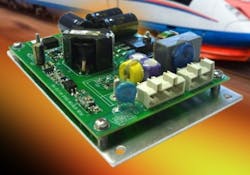Navy orders six P-8A Poseidon advanced maritime patrol jets from Boeing in $1.5 billion contract
The P-8A's flight management system and the stores management system has been developed by GE Aviation Systems in Grand Rapids, Mich. (formerly Smiths Aerospace). The cabin has as many as seven operator consoles.
The Poseidon's MX-20HD digital electro-optical and infrared (EO/IR) multi-spectral sensor turrets come from L-3 Communications Wescam in Burlington, Ontario. The MX-20HD is gyro-stabilized and can have as many as seven sensors including infrared, CCDTV, image intensifier, laser rangefinder and laser illuminator.
The aircraft has the upgraded APS-137D(V)5 maritime surveillance radar and signals intelligence (SIGINT) system from the Raytheon Co. Space and Airborne Systems (SAS) segment in McKinney, Texas. The APS-137D(V)5 radar, which is installed on the P-8's enlarged nose fairing, provides synthetic aperture radar (SAR) for imaging stationary ships and small vessels and for coastal and overland surveillance, and high resolution imaging synthetic aperture radar (ISAR) for imaging surfaced submarines and fast surface vessels operating in coastal waters.
The P-8A will have the CAE Inc. advanced integrated magnetic anomaly detection (MAD) System. The Navy plans to arm the P-8A with the MK 54 torpedo. The Northrop Grumman Corp. Electronic Systems segment in Baltimore is supplying the electronic warfare self-protection (EWSP) suite which includes Terma AN/ALQ-213(V) electronic warfare management system (EWMS), directional infrared countermeasures (DIRCM) set, radar warning system, BAE Systems countermeasures dispenser.
Boeing will do the work for this contract in Seattle; Hazelwood, Mo.; Baltimore; Greenlawn, N.Y.; Tampa, Fla.; McKinney, Texas; North Amityville, N.Y.; Hauppauge, N.Y.; Anaheim, Calif.; Grand Rapids, Mich.; and Rockford, Ill.
For more information contact Boeing online at www.boeing.com, or Naval Air Systems Command at www.navair.navy.mil.
